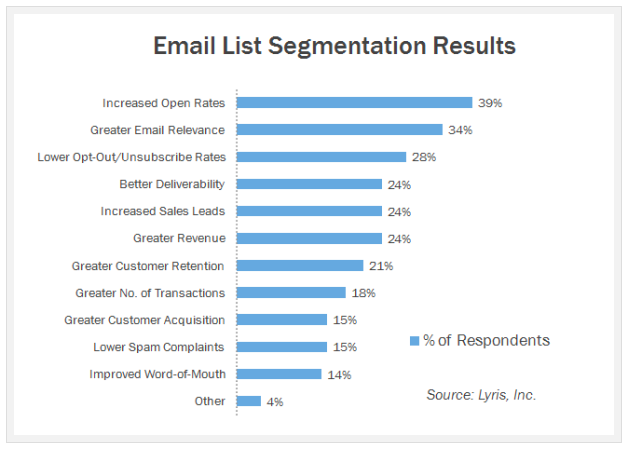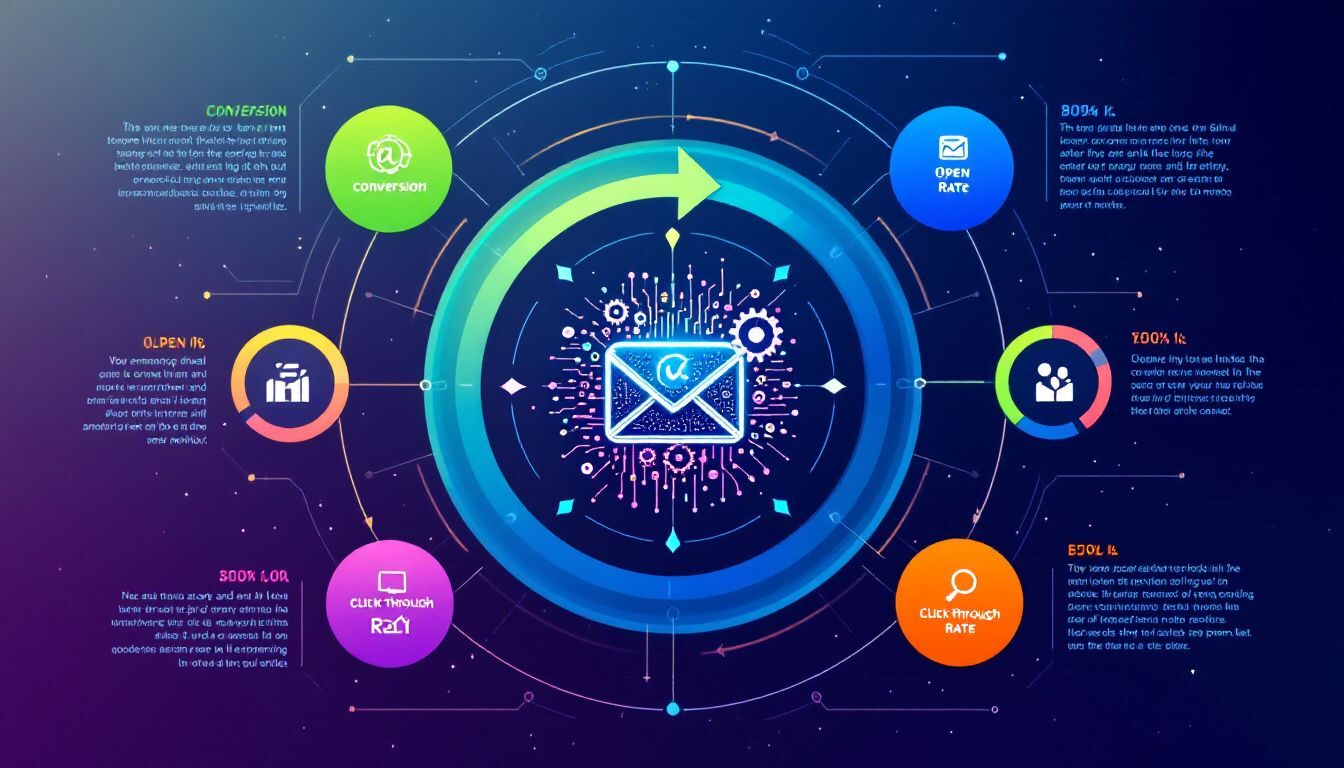
6 Ways to Segment Your Email List to Improve Your Success
When you create emails, do you send them out to everyone on your list? If so, you’re suffering from “bulk email disease.” This very common digital illness occurs when small business owners send every email to every single contact on their list.
Common symptoms include low open rates, poor conversions, and confusion about what to do next.
Well, If you’re ready to conquer this condition once and for all, you’ll need a healthy dose of segmentation. This includes dividing your larger list into small, targeted subgroups and coming up with a content strategy for how and when you’ll send emails to each list.
A method with proven results, as illustrated in the chart below, segmentation can increase your open rates by nearly 39 percent. It can also help boost your leads by 24 percent which is much higher than average growth statistics.
Here are six ways you can segment your list and get it back on the mend:
1. Geographic area
Segmenting lists by geographic area is one of the most popular methods and can be helpful for many reasons. This method gives you the opportunity to communicate with and talk to your customers where they are, increasing their ability to relate to your business.
Remember though, there are some businesses like cleaning or meal delivery services, which are limited to a geographical region. For these businesses, splitting contacts into even smaller segments, such as cities or towns, is useful.
2. Demographics
Similar to location, segmenting your list by demographics may work well for a single email or future email campaign series.
Let’s say you run a retail business that caters to women ages 30-60. When you release a new item that appeals more to the under 35 crowd, you can increase your chance of creating buzz with an email specifically for the people on your under 35 list.
The standard business demographics that are frequently used include age, gender, and income level.You can collect this information from customers by including it on a signup form and embedding it on your website or blog.
3. Loyal customers
Everyone likes to be rewarded for their loyalty. You’ll find that your customers are no different. With a marketplace overflowing with options, repeat buyers are a much smaller segment than they once were.
Use this to your advantage through emails that show your frequent customers you appreciate their business. Consider making a ‘Loyal Customer Promo’ or send out an email inviting 15 of your most loyal customers to a sneak peek of a product. You can make the deal even sweeter by giving them a chance to buy it with a select percentage off the final cost.
4. Brand advocates
Every business has a group of customers that advocate for their business without being asked to do so. This is also known as benefiting from the power of word of mouth marketing. Create a segment in your email list for this group. Much like your loyal customers, it’s important to reward those who spread the word about your business.
How do you identify a brand advocate? Look for customers that sing your praises on social media. Customers that have referred friends to your business, or reached out with positive feedback should also make the list.
5. Inactive customers
From those who champion your brand to the group that is nowhere to be found, you’ll need another segment of your list that’s dedicated strictly to inactive customers.
You shouldn’t let inactive customers go without a fight. Okay, maybe “fight” is a strong word, but you shouldn’t let them go without making a targeted effort to bring them back into your sales fold.
Consider sending a promo email to those inactive customers. Use a message titled, “We miss you!” or “It’s been a while, how have you been?” to reestablish contact and attempt to connect with them again. You can also send a survey asking for insight on why these customers have strayed away from your business. Through the survey results, you could make improvements to keep others from straying.
6. Role or position of contact
It goes without saying that to be effective, an email has to land in the right inbox. If an office supply store, for example, sends a promotional email to a CEO rather than the office manager, it’s probably going to be ignored. For this reason, it’s important to break up your list by positions, if possible. By doing so, the right person gets the right email, which leads to increased sales.
A few words on implementation
Curing bulk email disease can take some time. In fact, we suggest starting with only two or three segments listed above. If you overdose on segmentation, you could get frustrated and make your email marketing strategy more complicated than it needs to be.
Need extra guidance? Luckily, we have a resource guide to help you segment your list in your VerticalResponse account. Check out the step-by-step segment instructions to get started.
Get more posts like these straight to your inbox every week – Sign up for the VR Buzz, our FREE weekly newsletter.
© 2015, Contributing Author. All rights reserved.




